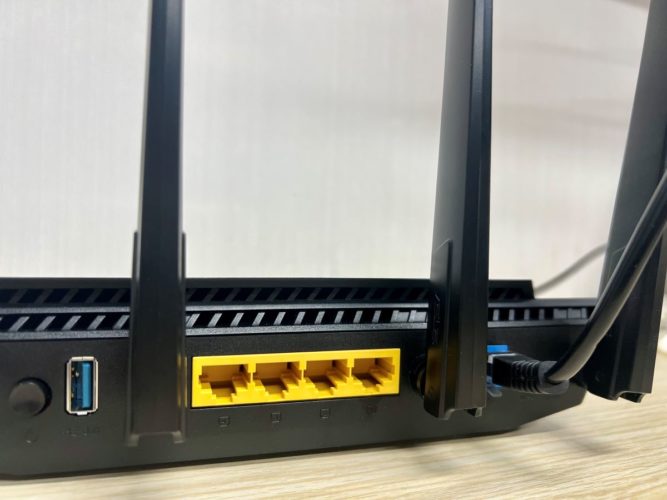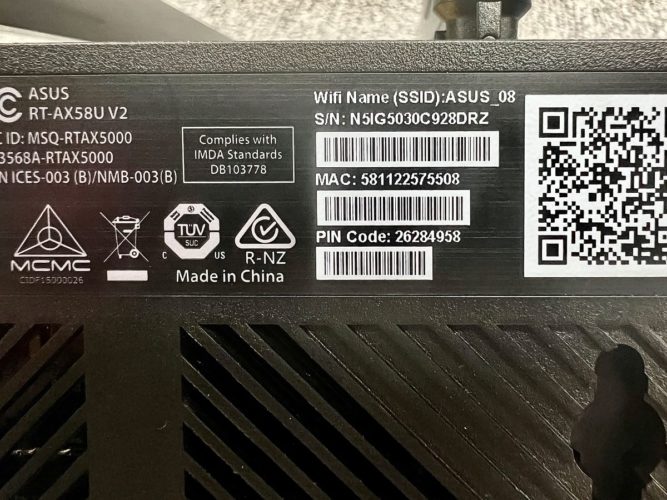How Many MAC Addresses Does a Router Have?

What To Know
- A modern-day router typically has a minimum of three MAC addresses, corresponding to its three primary network interfaces.
- These interfaces are WAN, Ethernet, and Wi-Fi. Each interface or port on the router has its unique MAC address.
This article clarifies the MAC address, drawing comparisons with the IP address and uncovering its role in our interconnected world.
Dive in to satisfy your curiosity and gain insights!
Quick Navigation
How Many MAC Addresses Does a Router Have?
The modern-day router has a minimum of three MAC addresses for its three network interfaces.

- WAN (Wide Area Network): A public network interface that comprises several LANs (Local Area Networks) or the internet.
- Wired LAN (Ethernet): A network interface that connects multiple devices with ethernet cables to set up a LAN.
- Wireless LAN (Wi-Fi): A network interface linking two or more devices through Wi-Fi (wireless communication) to form a LAN.
The more ports your router has, the more MAC addresses it will have—since each port has a NIC and each NIC has a MAC address. The MAC address behind a router is typically the WAN interface’s address.
How Do I Check the MAC Address of My Devices?
The MAC address of your device is usually found in its system or network settings. Most devices have the address printed on a label affixed to their bottom.

Other devices could have their MAC addresses attached somewhere else on them or in their software.
Here is a table listing devices and their MAC address information location:
| Devices | Method/Location |
| Modem/router | Look for it in the device’s back |
| Smart TVs | Head to TV Information/About This TV/… or user manual |
| Streaming devices | Look for it in the Network section |
| Windows | Press the Start button + R > cmd > ipconfig/all > Look for the physical address |
| Mac | Head to System preferences > Network icon > Select the interface you want to connect (Ethernet/Wi-Fi) > Advanced. MAC address will be listed under the Hardware tab |
| Linux | Open a console or terminal window and type “ipconfig” after logging in with the necessary permissions or as a superuser. The MAC address will appear as HWaddr (the ethernet interface’s hardware address). |
| Chrome OS | Sign in and click on the bottom-right positioned time symbol. Then, click Network and the particular network whose MAC address you want to view. |
| iPhones | Open Settings > About Phone > Status/Hardware Information > Wi-Fi MAC address |
| Android | Open Settings > General > About > Wi-Fi Address |
| Xbox One | Head to Settings and then select Network under Console. Next, click Advanced Settings to view wireless and wired MAC addresses. |
| Xbox 360 | Head to My Xbox and select System Settings. Navigate to Network Settings and then Configure Network. Choose Additional Settings and then select Alternate MAC Address. |
| PS3/PS4 | Head to Settings > System > System Information. The address will show adjacent to MAC Address (LAN Cable) and MAC Address (WI-Fi) for wireless MAC. |
| PS5 | Choose the gear icon or Settings. Choose System and then Console Information. The Wi-Fi MAC Address will appear at the end of the list. |
MAC Address vs. IP Address
MAC and IP addresses are unique identifiers for a device. The MAC address is NIC card manufacturer-provided, whereas your ISP or network administrator gives your device its IP address.
The MAC address is connected to network adapter hardware. The IP address (logical address) is related to TCP/IP, a networking software.
The MAC address is permanent, whereas a device’s IP address will change each time it connects to the internet.
A MAC address helps identify a device’s physical address on a local network, whereas an IP address detects a device globally or via its internet address.
Both look very different. An example MAC address will be 00:0a:95:9d:68:16. An IP address is expressed as a four-number set—for example, 192.128.2.39.
MAC addresses are assigned to a device at the time of its production. It’s hard-coded onto the device’s NIC. An IP address, on the other hand, is dynamic or not hardwired to a machine.
Both play a crucial role in transferring data from one computer to another. If not for these MAC and IP addresses, the data meant to be received by a particular computer will not come through.
The table below highlights the key differences between the two addresses:
| MAC Address | IP Address |
| Layer 2 (data link layer) address | Layer 3 (network layer) address |
| A device’s physical address | A device’s logical address |
| Local-scale device identification | Global-scale device identification |
| Static (cannot be changed) | Dynamic (changes each time the device connects to a network) |
| NIC card manufacturer-provided | ISP-provided |
| Hardware-related | Software-related |
| Not easily accessible to third parties | Can be determined by an external party |
Conclusion
Even though MAC address is not as familiar a term as IP address, it is an essential piece of information in the networking world.
The MAC address of a device is critical if you’re looking to configure an administrator or router in a network. It’s, therefore, imperative to know what MAC addresses are, where to find them, and how they vary from an IP address.
Both addresses are vital in letting devices transmit and receive information. Understanding how the two work together will help you troubleshoot network problems, optimize performance, and other things.
Catherine Tramell has been covering technology as a freelance writer for over a decade. She has been writing for Pointer Clicker for over a year, further expanding her expertise as a tech columnist. Catherine likes spending time with her family and friends and her pastimes are reading books and news articles.

